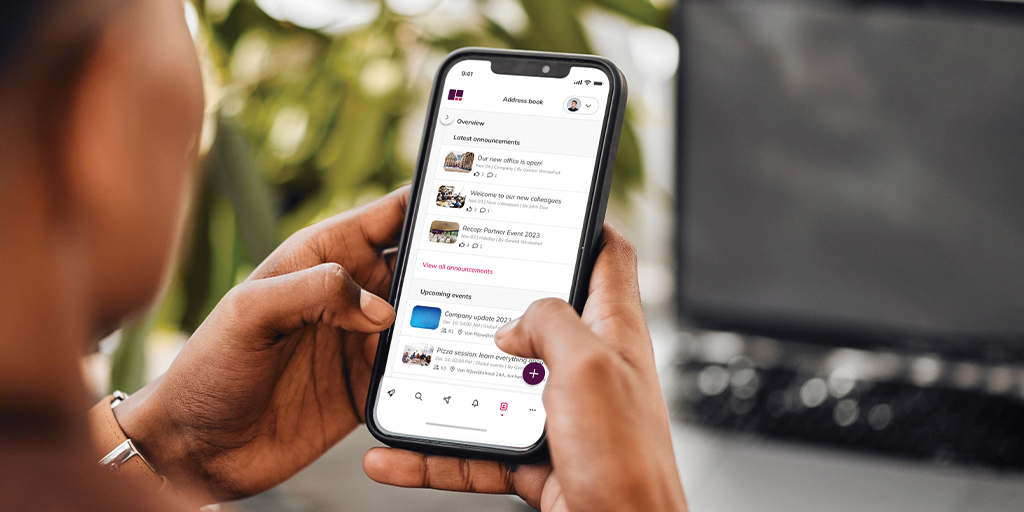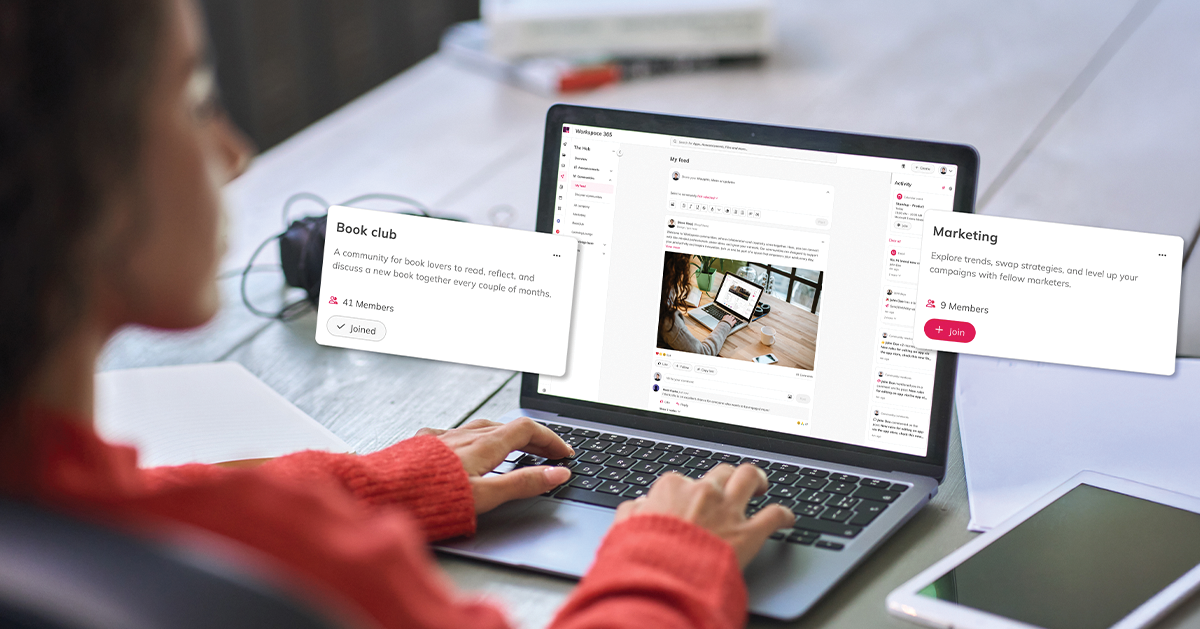So, who rules your company intranet? Is it your IT function? Perhaps it's your Internal Communications team? Could it be a completely different department like HR or Knowledge Management? Or perhaps it's a mix of all these different support functions?
The question of who owns, manages and is responsible for your intranet is not often as clear-cut as it seems. In most organisations, it tends to be either IT or Communications who are predominantly responsible for running the intranet, but even then, the lines of ownership between these teams can be blurred. Both may think they (or the other) are the "rulers".
Having overlapping boundaries of responsibility and a lack of clarity around ownership may not sound that important, but it can actually have consequences for the sustainability and success of your intranet. In this post, we're going to explore why intranet ownership can be fuzzy, why it's important and what you can do to establish clarity.
Why can intranet ownership be less than clear?
A mix of features and capabilities
One of the reasons that intranet ownership is not always clear is that modern intranets have a wide range of features and capabilities. They enable a wide range of organisational processes, including internal communications, content publishing, collaboration for project teams, social communities, knowledge sharing, employee self-service around HR tasks, forms & workflow, automation and more.
It's becoming more and more mixed
In recent years, this array of features has expanded, and has been increasingly driven by integrations with different systems. In our recent post about Intranet 3.0: the next stage of the modern intranet, we showed how intranets are becoming adaptive workspaces and enterprise front doors to the wider set of applications and tools used throughout companies.
Indeed, modern intranets have evolved significantly and are still changing, for example, to incorporate more automation; AI promises to further expand the scope of the intranet.
More than one department can be responsible
The scope of a modern intranet therefore extends beyond the responsibilities of one team. It can operate as your internal communications channel, your digital workspace and even as an HR portal, and it can feature integrations from applications and systems owned by teams throughout your organisation.
Therefore, overall ownership can become very fuzzy, especially as the nature of an intranet evolves over time and becomes more of a digital workspace.
Managing intranets requires a wide team
It takes a wide range of roles and responsibilities to manage an intranet, and this can contribute to ownership getting messy. This is where we can start to see very obvious areas of responsibility for IT and Communications teams.
IT responsibilities
Your IT team is likely to be responsible for the technical aspects of your intranet software, ensuring different standards are met, performance is robust and integrations are working well.
Communications responsibilities
The Communications team will be responsible for the content and communications that feed into the intranet, and probably the design and features.
However, the core intranet manager can still end up covering aspects that are technical and relate to content; for example, they may carry out advanced administration, ensure the intranet runs smoothly from day to day and act as a business analyst for future development. That intranet team might sit within IT or Communications.
Going further still, intranets are often built on a decentralised approach, especially in larger and complex organisations, and local teams are very likely to be responsible for their own content and even administration. Add to this product owners of integrated systems and even specialist roles covering search and analytics, and the number of people involved in the everyday management of the intranet increases further.
Why is this important?
Intranets are complex and have a lot of moving parts. When you don't have clear patterns of ownership and activity, it means that:
- There can be a duplication of effort
- Essential activities get missed
- There is a lack of co-ordination on projects, leading to inefficient practices
- Teams and functions go off and 'do their own thing'
- There is a lack of consistency in user experience across different intranet sites and features.
More seriously, when there is no overall ownership, the intranet gets left behind in terms of investment and longer-term strategic direction. There is nobody to provide the stewardship to ensure the intranet evolves with user needs or enforce the everyday governance that makes sure content and features are fresh, consistent and drive value.
It also means your intranet may not evolve towards being a modern, adaptive workspace that drives real value for every employee. When that happens, the intranet is in danger of long-term decline.
What is the best approach to intranet ownership?
The very best approach to intranet ownership is taking a cross-functional approach that involves:
- Including all the different functions that need to be involved, including IT, Communications and HR
- Providing clarity about who owns different aspects of the intranet and is responsible for making decisions, for example, separating out technical aspects and responsibility for content and design
- Setting up structures to enable cross-functional decision-making and good communication.
In this way, the question about who rules the intranet is less about 'Communications versus IT', and more about 'Communications, IT and other departments working together effectively'.
Taking a cross-functional approach doesn't mean that the intranet is suddenly ruled by committee or consensus where it is difficult to make quick decisions; in fact, it's much more about making sure decisions are made by the right people, and having the appropriate discussions when there needs to be wider input from stakeholders.
What can help a cross-functional team rule your intranet?
There are several approaches and tactics that can help drive successful cross-functional ownership of an intranet.
Steering Committees
Steering committees with representation from senior stakeholders across different key functions provide useful forums for very high-level decision-making about the intranet, such as strategic changes, signing off annual budgets and more.
They don't need to sit very often - perhaps every quarter or even twice a year - although more often during a new project, but they are a tried and tested structure that works well, especially in larger organisations.
Cross-functional working groups
Cross-functional working groups work in a similar way to intranet steering committees, but focus more on operational matters. They may meet as often as once a month, and feature key people from the different functions that support the intranet and ensure there is good communication, specifically about intranet operations.
RACI Matrix
A RACI matrix is an excellent tool to work out the exact responsibilities for the intranet relating to all the different areas, tools, products, features, and content areas in terms of:
- Who is Responsible
- Who is Accountable
- Who needs to be Consulted about changes
- Who simply needs to be Informed.
A RACI matrix might break down the intranet into aspects such as technology platform, design standards, homepage, strategy and main content areas. Defining the RACI matrix forces everyone to clarify exactly who is responsible for which areas or aspects, and also helps to define the processes that need to be put in place.
If you have an adaptive workspace like Workspace 365, RACI can help you to define any related permissions too.
Cross-functional project teams
Intranet projects should always involve a cross-functional project team - not just the 'core' members, but also the wider members of the project who may only play a small (but still important) role.
Having a platform that enables a true digital workspace
It also helps to have the right software! If you are using a digital workspace platform like Workspace 365, it makes it easier to integrate different systems and create an intranet that all your different stakeholders buy into and take an interest in.
Want more information? Arrange a demo!
The best intranets are the ones that are owned by a cross-functional team. If you want an intranet that is going to tick all the boxes across different functions, you need an adaptive, digital workspace. Why not arrange a free demo of Workspace 365 to see an intranet that all your stakeholders are going to get excited about in action?







